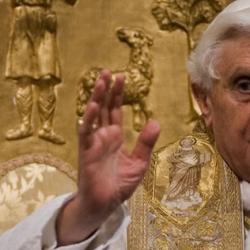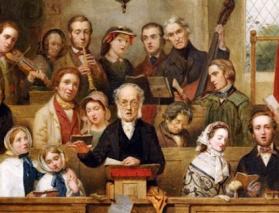In a 2009 First Things piece reprinted in It’s Not the End of the World: It’s Just the End of You, David P. Goldman explores how Western tonal music is able to capture higher orders of time and that evoke eternity. Drawing on Augustine’s account of time in terms of memory and anticipation, Goldman argues that Western composers learned to extend “the tension and resolution of dissonance and consonance in longer musical forms.” In early modern tonal music, “tonality made possible whole regions of relative instability within a longer form.”
He argues that “Even the simplest rhythm creates expectations; we assume that the pattern we hear will continue, and that one verse will be like the next. We judge the time of individual syllables and feet within that rhythm according to our expectations. Just as Augustine argued, we do not grope our way blindly from beat to beat; on the contrary, we hear the individual beats with our mind’s ear.”
And Goldman illustrates the point with a simple example, the first four measures of Stephen Foster’s “Old Folks at Home.” When we get to “Far, far away,” we “expect that another four measures will follow, and bring us back to the tonic, or home key, and that is just what Foster does. Our mind’s ear demands that the second scale-step on which we lingered at the word ‘away’ descend to the tonic at ‘That’s where the old folks stay.’ The ear also wants the fifth degree, or dominant, in the bass to descend back to the tonic.” This “antecedent-consequent” structure “links a rhythmic expectation (a second four-bar phrase to follow the first four-bar phrase) to a tonal expectation (a move from the tonic to the dominant at the end of the first phrase sets up a cadence on the tonic at the end of the second eight-bar phrase). We know where each beat should fall and how the voice-leading should return us to the tonic, because our mind’s ear forms a judgment about the structure of the song.”
Such simple tunes do not, he admits, evoke the sacred, but the same forms are at work in larger works that do evoke eternity by forming expectations of resolution. When “musicians discovered how to link musical rhythm to the resolution of dissonance into consonance, Western music acquired a teleology. Every tonal work has a goal, the resolution of tonal tension in the return to the tonic by way of a final cadence from the dominant.”
Hence, he concludes, “The tonal music of the West began with a teleology learned from Christianity,” even though the teleology was later borrowed for non-sacred music.















